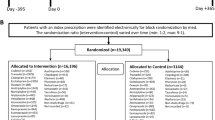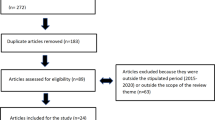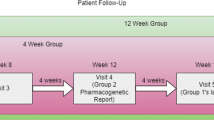Abstract
The encouraging results of late-phase clinical trials investigating psychedelic-assisted psychotherapy suggests that US Food and Drug Administration approval and subsequent expansion of use is imminent in the USA. Without fit-for-purpose postmarket surveillance to proactively monitor utilization by patients and providers, there is a risk that the real-world benefits of psychedelic-assisted psychotherapy will not be realized. Incorrect conclusions, such as misattribution of adverse events to illicit psychedelics, may result from ill-designed surveillance programs. A successful surveillance program should monitor appropriate, equitable access for patients and inform reasonable limitations to improve patient safety. Multiple domains, including environmental factors, personal factors and relevant effectiveness and safety outcomes, should be incorporated. Current data systems that monitor drug use are generally ill-suited to address the unique needs for psychedelic surveillance. An intentionally designed mosaic of data systems is required to monitor the safety and effectiveness of psychedelic surveillance.
This is a preview of subscription content, access via your institution
Access options
Subscribe to this journal
Receive 12 digital issues and online access to articles
$59.00 per year
only $4.92 per issue
Buy this article
- Purchase on Springer Link
- Instant access to full article PDF
Prices may be subject to local taxes which are calculated during checkout


Similar content being viewed by others
References
Nichols, D. E. Psychedelics. Pharmacol. Rev. 68, 264–355 (2016).
Search for: Psilocybin | clinicaltrials.gov (National Library of Medicine, accessed 20 December 2023); https://clinicaltrials.gov/search?intr=Psilocybin&aggFilters=phase:2%203,status:not%20rec%20act,studyType:int&start=2015-01-01_
Search for: Lysergic Acid Diethylamide | clinicaltrials.gov. (National Library of Medicine, accessed 20 December 2023); https://clinicaltrials.gov/search?intr=Lysergic%20Acid%20Diethylamide&aggFilters=phase:2%203,status:rec%20act%20not%20com,studyType:int&start=2015-01-01_
Search for: Ketamine | clinicaltrials.gov. (National Library of Medicine, accessed 20 December 2023); https://clinicaltrials.gov/search?intr=Ketamine&aggFilters=phase:2%203,status:rec%20act%20not%20com,studyType:int&start=2015-01-01_
Raison, C. L. et al. Single-dose psilocybin treatment for major depressive disorder: a randomized clinical trial. JAMA 330, 843–853 (2023).
Goodwin, G. M. et al. Single-dose psilocybin for a treatment-resistant episode of major depression. N. Engl. J. Med. 387, 1637–1648 (2022).
Mitchell, J. M. et al. MDMA-assisted therapy for severe PTSD: a randomized, double-blind, placebo-controlled phase 3 study. Nat. Med. 27, 1025–1033 (2021).
Mitchell, J. M. et al. MDMA-assisted therapy for moderate to severe PTSD: a randomized, placebo-controlled phase 3 trial. Nat. Med. 29, 2473–2480 (2023).
MAPS PBC Announces Submission of New Drug Application to the FDA for MDMA-Assisted Therapy for PTSD (MAPS Public Benefit Corporation, accessed 20 December 2023); https://mapsbcorp.com/news/mdma-for-ptsd-fda-submission/
Psychedelic Drugs: Considerations for Clinical Investigations (Food and Drug Administration, accessed 5 July 2023); https://www.fda.gov/regulatory-information/search-fda-guidance-documents/psychedelic-drugs-considerations-clinical-investigations
Blanco, C. et al. Generalizability of clinical trials for alcohol dependence to community samples. Drug Alcohol Depend. 98, 123–128 (2008).
Cook, R. R. et al. Estimating the impact of stimulant use on initiation of buprenorphine and extended-release naltrexone in two clinical trials and real-world populations. Addict. Sci. Clin. Pract. 18, 11 (2023).
Humphreys, K., Weingardt, K. R. & Harris, A. H. Influence of subject eligibility criteria on compliance with National Institutes of Health guidelines for inclusion of women, minorities and children in treatment research. Alcohol Clin. Exp. Res. 31, 988–995 (2007).
Md Khairi, L. N. H., Fahrni, M. L. & Lazzarino, A. I. The race for global equitable access to COVID-19 vaccines. Vaccines 10, 1306 (2022).
Storbjork, J., Garfield, J. B. & Larner, A. Implications of eligibility criteria on the generalizability of alcohol and drug treatment outcome research: a study of real-world treatment seekers in Sweden and in Australia. Subst. Use Misuse 52, 439–450 (2017).
Susukida, R., Crum, R. M., Stuart, E. A., Ebnesajjad, C. & Mojtabai, R. Assessing sample representativeness in randomized controlled trials: application to the National Institute of Drug Abuse Clinical Trials Network. Addiction 111, 1226–1234 (2016).
Berridge, V. Heroin prescription and history. N. Engl. J. Med. 361, 820–821 (2009).
Hall, W. et al. Public health implications of legalising the production and sale of cannabis for medicinal and recreational use. Lancet 394, 1580–1590 (2019).
Heal, D. J., Smith, S. L., Gosden, J. & Nutt, D. J. Amphetamine, past and present—a pharmacological and clinical perspective. J. Psychopharmacol. 27, 479–496 (2013).
Karch, S. B. Cocaine: history, use, abuse. J. R. Soc. Med. 92, 393–397 (1999).
Kuehn, B. M. Methadone treatment marks 40 years. JAMA 294, 887–889 (2005).
Califf, R. M. Now is the time to fix the evidence generation system. Clin. Trials 20, 3–12 (2023).
Kim, J., Farchione, T., Potter, A., Chen, Q. & Temple, R. Esketamine for treatment-resistant depression—first FDA-approved antidepressant in a new class. N. Engl. J. Med. 381, 1–4 (2019).
Gastaldon, C., Raschi, E., Kane, J. M., Barbui, C. & Schoretsanitis, G. Post-marketing safety concerns with esketamine: a disproportionality analysis of spontaneous reports submitted to the FDA adverse event reporting system. Psychother. Psychosom. 90, 41–48 (2021).
Dasgupta, N., Schwarz, J., Hennessy, S., Ertefaie, A. & Dart, R. C. Causal inference for evaluating prescription opioid abuse using trend-in-trend design. Pharmacoepidemiol. Drug Saf. 28, 716–725 (2019).
Delgadillo, J. et al. How reliable is depression screening in alcohol and drug users? A validation of brief and ultra-brief questionnaires. J. Affect. Disord. 134, 266–271 (2011).
Foa, E. B. et al. Psychometric properties of the Posttraumatic Stress Disorder Symptom Scale Interview for DSM-5 (PSSI-5). Psychol. Assess. 28, 1159–1165 (2016).
Spitzer, R. L., Kroenke, K., Williams, J. B. & Löwe, B. A brief measure for assessing generalized anxiety disorder: the GAD-7. Arch. Intern. Med. 166, 1092–1097 (2006).
Di Forti, M. et al. The contribution of cannabis use to variation in the incidence of psychotic disorder across Europe (EU-GEI): a multicentre case-control study. Lancet Psychiatry 6, 427–436 (2019).
Quattrone, D. et al. Daily use of high-potency cannabis is associated with more positive symptoms in first-episode psychosis patients: the EU-GEI case-control study. Psychol. Med. 51, 1329–1337 (2021).
Ragnhildstveit, A. et al. The potential of ketamine for posttraumatic stress disorder: a review of clinical evidence. Ther. Adv. Psychopharmacol. 13, 20451253231154125 (2023).
Daly, E. J. et al. Efficacy of esketamine nasal spray plus oral antidepressant treatment for relapse prevention in patients with treatment-resistant depression: a randomized clinical trial. JAMA Psychiatry 76, 893–903 (2019).
Rucker, J. J. et al. The effects of psilocybin on cognitive and emotional functions in healthy participants: results from a phase 1, randomised, placebo-controlled trial involving simultaneous psilocybin administration and preparation. J. Psychopharmacol. 36, 114–125 (2022).
Muller, F. et al. Flashback phenomena after administration of LSD and psilocybin in controlled studies with healthy participants. Psychopharmacology (Berl.) 239, 1933–1943 (2022).
Breeksema, J. J. et al. Adverse events in clinical treatments with serotonergic psychedelics and MDMA: a mixed-methods systematic review. J. Psychopharmacol. 36, 1100–1117 (2022).
Ching, T. H. et al. MDMA-assisted therapy for posttraumatic stress disorder: a pooled analysis of ethnoracial differences in efficacy and safety from two Phase 2 open-label lead-in trials and a Phase 3 randomized, blinded placebo-controlled trial. J. Psychopharmacol. 36, 974–986 (2022).
Beck, K. et al. Association of ketamine with psychiatric symptoms and implications for its therapeutic use and for understanding schizophrenia: a systematic review and meta-analysis. JAMA Netw. Open 3, e204693 (2020).
Black, E. et al. Toxicological analysis of serious drug-related harm among electronic dance music festival attendees in New South Wales, Australia: a consecutive case series. Drug Alcohol Depend. 213, 108070 (2020).
Darke, S., Duflou, J., Peacock, A., Farrell, M. & Lappin, J. Characteristics and circumstances of death related to new psychoactive stimulants and hallucinogens in Australia. Drug Alcohol Depend. 204, 107556 (2019).
Redona, P. T. Jr, Woods, C., Jackson, D. & Usher, K. Rates and patterns of Australian emergency department presentations of people who use stimulants: a systematic literature review. Cureus 14, e30429 (2022).
Simonsson, O., Hendricks, P. S., Chambers, R., Osika, W. & Goldberg, S. B. Prevalence and associations of challenging, difficult or distressing experiences using classic psychedelics. J. Affect. Disord. 326, 105–110 (2023).
Jones, G., Arias, D. & Nock, M. Associations between MDMA/ecstasy, classic psychedelics, and suicidal thoughts and behaviors in a sample of US adolescents. Sci. Rep. 12, 21927 (2022).
Stein, D. J. et al. Cross-national analysis of the associations between traumatic events and suicidal behavior: findings from the WHO World Mental Health Surveys. PLoS One 5, e10574 (2010).
Shrier, I. & Platt, R. W. Reducing bias through directed acyclic graphs. BMC Med. Res. Methodol. 8, 70 (2008).
Beran, T. N. & Violato, C. Structural equation modeling in medical research: a primer. BMC Res. Notes 3, 267 (2010).
Mansournia, M. A. & Altman, D. G. Population attributable fraction. Brit. Med. J. 360, k757 (2018).
Ammerman, B. A. & Law, K. C. Using intensive time sampling methods to capture daily suicidal ideation: a systematic review. J. Affect. Disord. 299, 108–117 (2022).
Gee, B. L., Han, J., Benassi, H. & Batterham, P. J. Suicidal thoughts, suicidal behaviours and self-harm in daily life: a systematic review of ecological momentary assessment studies. Digit. Health. 6, 2055207620963958 (2020).
Sedano-Capdevila, A., Porras-Segovia, A., Bello, H. J., Baca-Garcia, E. & Barrigon, M. L. Use of ecological momentary assessment to study suicidal thoughts and behavior: a systematic review. Curr. Psychiatry Rep. 23, 41 (2021).
Black, S. B. et al. The critical role of background rates of possible adverse events in the assessment of COVID-19 vaccine safety. Vaccine 39, 2712–2718 (2021).
Baylen, C. A. & Rosenberg, H. A review of the acute subjective effects of MDMA/ecstasy. Addiction 101, 933–947 (2006).
Huang, J., Liu, D., Bai, J. & Gu, H. Median effective dose of esketamine for intranasal premedication in children with congenital heart disease. BMC Anesthesiol. 23, 129 (2023).
Rocha, J. M. et al. Effects of ayahuasca on the recognition of facial expressions of emotions in naive healthy volunteers: a pilot, proof-of-concept, randomized controlled trial. J. Clin. Psychopharmacol. 41, 267–274 (2021).
Bonsignore, A., Barranco, R., Morando, A., Fraternali Orcioni, G. & Ventura, F. MDMA induced cardio-toxicity and pathological myocardial effects: a systematic review of experimental data and autopsy findings. Cardiovasc. Toxicol. 19, 493–499 (2019).
Dahmane, E., Hutson, P. R. & Gobburu, J. V. S. Exposure-response analysis to assess the concentration–QTc relationship of psilocybin/psilocin. Clin. Pharmacol. Drug Dev. 10, 78–85 (2021).
Diffley, M., Armenian, P., Gerona, R., Reinhartz, O. & Avasarala, K. Catecholaminergic polymorphic ventricular tachycardia found in an adolescent after a methylenedioxymethamphetamine and marijuana-induced cardiac arrest. Crit. Care Med. 40, 2223–2226 (2012).
Zhou, Y. L. et al. Cardiovascular effects of repeated subanaesthetic ketamine infusion in depression. J. Psychopharmacol. 35, 159–167 (2021).
Kahn, D. E., Ferraro, N. & Benveniste, R. J. 3 cases of primary intracranial hemorrhage associated with ‘Molly’, a purified form of 3,4-methylenedioxymethamphetamine (MDMA). J. Neurol. Sci. 323, 257–260 (2012).
Ludwig, V. M. et al. Cardiovascular effects of combining subcutaneous or intravenous esketamine and the MAO inhibitor tranylcypromine for the treatment of depression: a retrospective cohort study. CNS Drugs 35, 881–892 (2021).
Michael White, C. How MDMA’s pharmacology and pharmacokinetics drive desired effects and harms. J. Clin. Pharmacol. 54, 245–252 (2014).
McNamara, R., Maginn, M. & Harkin, A. Caffeine induces a profound and persistent tachycardia in response to MDMA (‘Ecstasy’) administration. Eur. J. Pharmacol. 555, 194–198 (2007).
Malcolm, B. & Thomas, K. Serotonin toxicity of serotonergic psychedelics. Psychopharmacology (Berl.) 239, 1881–1891 (2022).
Pilgrim, J. L., Gerostamoulos, D., Woodford, N. & Drummer, O. H. Serotonin toxicity involving MDMA (ecstasy) and moclobemide. Forensic Sci. Int. 215, 184–188 (2012).
Sklerov, J., Levine, B., Moore, K. A., King, T. & Fowler, D. A fatal intoxication following the ingestion of 5-methoxy-N,N-dimethyltryptamine in an ayahuasca preparation. J. Anal. Toxicol. 29, 838–841 (2005).
de la Torre, R. et al. Human pharmacology of MDMA: pharmacokinetics, metabolism and disposition. Ther. Drug Monit. 26, 137–144 (2004).
Vizeli, P., Schmid, Y., Prestin, K., Meyer Zu Schwabedissen, H. E. & Liechti, M. E. Pharmacogenetics of ecstasy: CYP1A2, CYP2C19 and CYP2B6 polymorphisms moderate pharmacokinetics of MDMA in healthy subjects. Eur. Neuropsychopharmacol. 27, 232–238 (2017).
Vizeli, P. et al. Genetic influence of CYP2D6 on pharmacokinetics and acute subjective effects of LSD in a pooled analysis. Sci. Rep. 11, 10851 (2021).
Pardo-Lozano, R. et al. Clinical pharmacology of 3,4-methylenedioxymethamphetamine (MDMA, ‘ecstasy’): the influence of gender and genetics (CYP2D6, COMT, 5-HTT). PLoS One 7, e47599 (2012).
Shen, H. W., Jiang, X. L., Winter, J. C. & Yu, A. M. Psychedelic 5-methoxy-N,N-dimethyltryptamine: metabolism, pharmacokinetics, drug interactions and pharmacological actions. Curr. Drug Metab. 11, 659–666 (2010).
Hicks, J. K. et al. Clinical Pharmacogenetics Implementation Consortium (CPIC) guideline for CYP2D6 and CYP2C19 genotypes and dosing of selective serotonin reuptake inhibitors. Clin. Pharmacol. Ther. 98, 127–134 (2015).
Smith, S. M. et al. Classification and definition of misuse, abuse and related events in clinical trials: ACTTION systematic review and recommendations. Pain 154, 2287–2296 (2013).
Heal, D. J., Gosden, J. & Smith, S. L. Evaluating the abuse potential of psychedelic drugs as part of the safety pharmacology assessment for medical use in humans. Neuropharmacology 142, 89–115 (2018).
Neitzke-Spruill, L. & Glasser, C. A gratuitous grace: the influence of religious set and intent on the psychedelic experience. J. Psychoactive Drugs 50, 314–321 (2018).
Golden, T. L. et al. Effects of setting on psychedelic experiences, therapies and outcomes: a rapid scoping review of the literature. Curr. Top. Behav. Neurosci. 56, 35–70 (2022).
Carhart-Harris, R. L. et al. Psychedelics and the essential importance of context. J. Psychopharmacol. 32, 725–731 (2018).
Doll, A. What to say (and not to say) when reporters ask questions. Nurs. Life 2, 56–61 (1982).
de la Fuente Revenga, M. et al. Tolerance and cross-tolerance among psychedelic and nonpsychedelic 5-HT(2A) receptor agonists in mice. ACS Chem. Neurosci. 13, 2436–2448 (2022).
Morton, E. et al. Risks and benefits of psilocybin use in people with bipolar disorder: an international web-based survey on experiences of ‘magic mushroom’ consumption. J. Psychopharmacol. 37, 49–60 (2023).
Psilocybin Facilitator License Application Guide for Applications Submitted Online (Oregon Health Authority, accessed 14 June 2023); https://www.oregon.gov/oha/PH/PREVENTIONWELLNESS/Documents/Facilitator-License-Application-Guide-ONLINE.pdf
Anderson, B. T., Danforth, A. L. & Grob, C. S. Psychedelic medicine: safety and ethical concerns. Lancet Psychiatry 7, 829–830 (2020).
McNamee, S., Devenot, N. & Buisson, M. Studying harms is key to improving psychedelic-assisted therapy-participants call for changes to research landscape. JAMA Psychiatry 80, 411–412 (2023).
McAninch, J. et al. (eds) in Pharmacoepidemiology 6th edn, Ch. 28, 701–722 (Wiley, 2020).
Dart, R. C. Monitoring risk: post marketing surveillance and signal detection. Drug Alcohol Depend. 105, S26–S32 (2009).
Lawlor, D. A., Tilling, K. & Davey Smith, G. Triangulation in aetiological epidemiology. Int. J. Epidemiol. 45, 1866–1886 (2016).
Papp, L. M. et al. Development and acceptability of a method to investigate prescription drug misuse in daily life: ecological momentary assessment study. JMIR Mhealth Uhealth 8, e21676 (2020).
Rose, G. Sick individuals and sick populations. Int. J. Epidemiol. 14, 32–38 (1985).
Drug Abuse Warning Network (DAWN) (Substance Abuse and Mental Health Services Administration, accessed 4 May 2023); https://www.samhsa.gov/data/data-we-collect/dawn-drug-abuse-warning-network
Key Substance Use and Mental Health Indicators in the United States: Results from the 2021 National Survey on Drug Use and Health (Center for Behavioral Health Statistics and Quality, Substance Abuse and Mental Health Services Administration, 2022).
Monitoring the Future (University of Michigan, 2022).
National Hospital Care Survey (National Center for Health Statistics, accessed 4 May 2023); https://www.cdc.gov/nchs/nhcs/index.htm
Gummin, D. D. et al. 2021 annual report of the National Poison Data System© (NPDS) from America’s Poison Centers: 39th annual report. Clin. Toxicol. (Phila.) 60, 1381–1643 (2022).
Kumar, A. The newly available FAERS public dashboard: implications for health care professionals. Hosp. Pharm. 54, 75–77 (2019).
Platt, R. et al. The FDA sentinel initiative—an evolving national resource. N. Engl. J. Med. 379, 2091–2093 (2018).
Trinidad, J. P., Warner, M., Bastian, B. A., Minino, A. M. & Hedegaard, H. Using literal text from the death certificate to enhance mortality statistics: characterizing drug involvement in deaths. Natl Vital Stat. Rep. 65, 1–15 (2016).
Monte, A. A. et al. Acute illness associated with cannabis use, by route of exposure: an observational study. Ann. Intern. Med. 170, 531–537 (2019).
McCabe, S. E. et al. Trajectories of prescription drug misuse among US adults from ages 18 to 50 years. JAMA Netw. Open 5, e2141995 (2022).
Author information
Authors and Affiliations
Contributions
J.C.B., A.A.M., N.D., J.S.J., K.M.R., R.A.O. and R.C.D. substantially contributed to the conception and design of the work. J.C.B., A.A.M., J.S.J., K.M.R. and R.C.D. wrote the initial draft. J.C.B., A.A.M., N.D., J.S.J., K.M.R., R.A.O. and R.C.D. critically reviewed for intellectual content. J.C.B. led the writing and editing process.
Corresponding author
Ethics declarations
Competing interests
This research was conducted by Rocky Mountain Poison and Drug Safety (RMPDS). Outside of this work, RMPDS is supported by subscriptions from pharmaceutical manufacturers, government and non-government agencies for surveillance, research and reporting services. RMPDS is a division of the nonprofit Denver Health and Hospital Authority (DHHA), a political subdivision of the state of Colorado, USA. No subscriber participated in the development of these viewpoints.
Peer review
Peer review information
Nature Mental Health thanks Joshua Rosenblat, William R. Smith and the other, anonymous, reviewers for their contribution to the peer review of this work.
Additional information
Publisher’s note Springer Nature remains neutral with regard to jurisdictional claims in published maps and institutional affiliations.
Rights and permissions
Springer Nature or its licensor (e.g. a society or other partner) holds exclusive rights to this article under a publishing agreement with the author(s) or other rightsholder(s); author self-archiving of the accepted manuscript version of this article is solely governed by the terms of such publishing agreement and applicable law.
About this article
Cite this article
Black, J.C., Monte, A.A., Dasgupta, N. et al. Optimizing real-world benefit and risk of new psychedelic medications: the need for innovative postmarket surveillance. Nat. Mental Health 2, 469–477 (2024). https://doi.org/10.1038/s44220-024-00233-1
Received:
Accepted:
Published:
Issue Date:
DOI: https://doi.org/10.1038/s44220-024-00233-1



